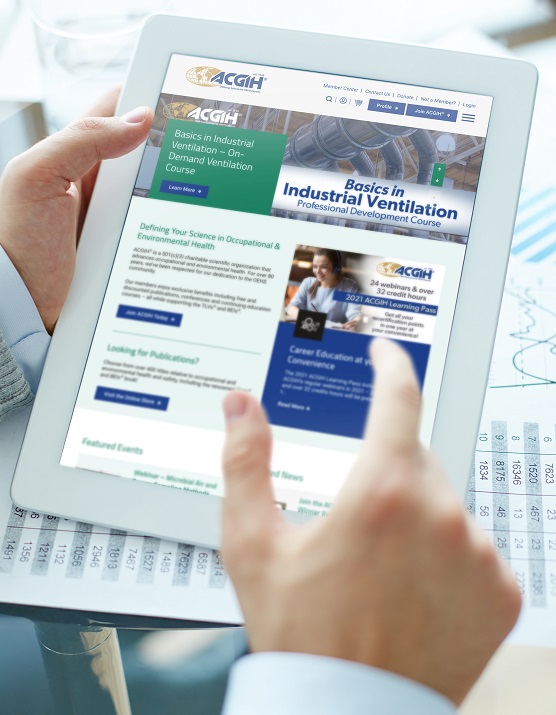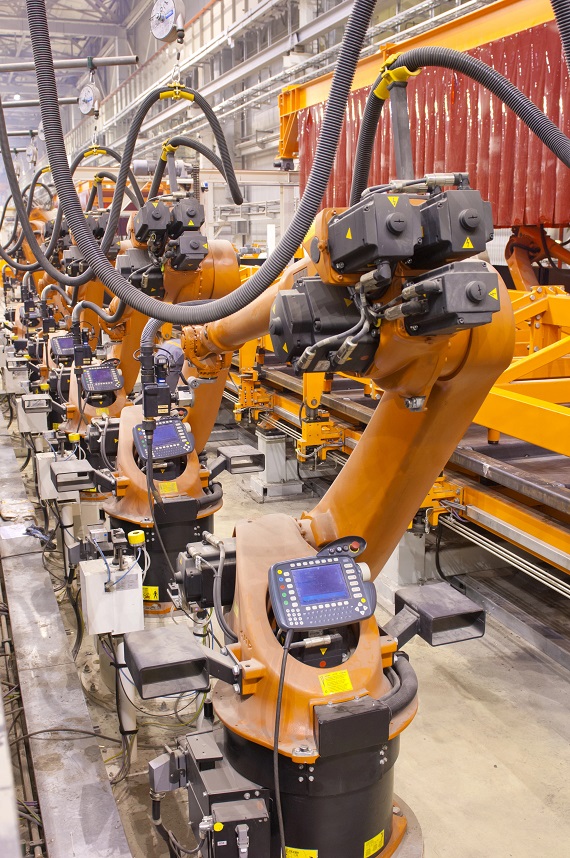REGULATIONS - OSHA Air Quality Monitoring
The Regulatory Case for Clean Air
Workplace air quality is regulated & supported by a number of standards and guidelines. Manufacturers understand that they must keep up with regulations—which are ever-changing—and comply with them to the best of their ability. Maintaining clean air isn't just an ethical and functional necessity, it's the law.
Failure to comply with air quality regulations opens your business to multiple liabilities. Regulatory agencies can levy serious fines if they find your facility is out of compliance. Lawsuits stemming from health-related problems are worsened in the case of noncompliance, as well. Fortunately, there are comprehensive ways to improve your air quality. RoboVent engineers understand air quality regulations & guidelines and how to meet them. For more information on these topics, explore the following:
- OSHA
- ACGIH
- Environmental Regulations
- Staying Ahead of Regulations
Clean Air and Compliance
Regulating harmful dusts, weld fumes and other airborne particulates in the workplace is the job of the Occupational Safety and Health Administration (OSHA). This agency began its work in 1971 with a mission to “assure safe and healthful working conditions for working men and women by setting and enforcing standards and by providing training, outreach, education and assistance.” Today, OSHA is the primary agency regulating air quality in manufacturing facilities.
OSHA’s authority comes out of its “General Duty Clause.” It reads: “Each employer shall furnish to each of his employees employment and a place of employment which are free from recognized hazards that are causing or are likely to cause death or serious physical harm to his employees.” The legal code is long (and ever growing) and includes many specific standards for air quality, most of which are contained in Standard 29 CFR Part 1910 Subpart Z.
The EPA and Your Clean Air
In addition to OSHA’s long list of air quality regulations, the Environmental Protection Agency (EPA) enforces a set of regulations, as well. Most of these rules are the result of the Clean Air Act. While this act was passed in 1963, it has been amended several times, expanding the list of regulated substances and the purview of their enforcement.
One of the EPA’s sets of rules particularly relevant to manufacturing is the National Emission Standards for Hazardous Air Pollutants (NESHAP). These rules establish nine metal fabrication and finishing “source categories.” These include operations such as “Electrical and Electronics Equipment Finishing Operations” and “Iron and Steel Forging.” The EPA’s purpose for this list was to reduce “Metal Fabrication Hazardous Air Pollutants (MFHAP) of compounds of metals such as Cadmium, Chromium, Lead, Manganese and Nickel.” The EPA has laid out the requirements and methods of compliance, much like OSHA has. EPA regulations also limit how much contaminated air a facility can exhaust to the outside.
As with OSHA regulations, compliance with these EPA rules is critically important for manufacturers. Noncompliance can carry serious fines, hassles and reputational harm.
Scientific Standards for Clean Air
Not to be confused with OSHA but very important in its own right is the American Conference of Governmental Industrial Hygienists (ACGIH). This organization is a group of industry professionals that maintains its own list of air quality guidelines. These guidelines are based on rigorous science and industry expertise. In general, ACGIH guidelines are more stringent than OSHA standards. In many ways, the ACGIH plays a leadership role in the air quality field; OSHA often changes its standards to match those of the ACGIH, though often after a long period of deliberation.
Canadian regulatory agencies tend to follow ACGIH guidelines for clean air. Canada lacks a national regulatory body that is the equivalent of OSHA. Instead, they set their regulations at the provincial level. About half of Canadian provinces officially base their regulations on ACGIH exposure limits.
An example of the ACGIH’s leadership in air quality guidelines is its announcement regarding exposure limits for manganese. Until recently, the ACGIH’s limit for manganese was 0.2 mg/m3. Recall that the U.S. limit (listed above) is currently 5.0 mg/m3—25 times the ACGIH level. In early 2016, however, the ACGIH announced a new limit for manganese of 0.02 mg/m3. This constitutes an exposure level ten times stricter than before and 250 times stricter than the current OSHA level.


Strategizing with Clean Air
Keeping up with changing air quality regulations has become a major responsibility for manufacturers. While plant managers usually understand the dangers of airborne contaminants, translating that shop-floor knowledge into a strategy for legal compliance is something different. And when those legal rules change, the challenge can become particularly acute.
An important step in staying ahead of regulations is to establish a baseline of your air quality. This is done through an air quality audit, preferably conducted by a certified industrial hygienist. These professionals set up monitors throughout your facility to measure air quality. Using their report, you can then develop a strategy for meeting or surpassing the current regulations. Most likely, of course, you will already be complying with many or all OSHA regulations. Even a fully compliant facility, however, could benefit from an air quality audit. Besides serving as a third-party documentation of your air quality, the audit presents the opportunity to plan for the future—a future in which regulations could change.
There are many examples of air quality regulations changing and of manufacturers being caught by surprise. A recent rule change from OSHA involving silica dust is expected to force many manufacturers to take new actions to ensure compliance. The new silica rules are significantly more stringent than previous regulations. Mounting scientific evidence had shown that the previous limits on silica dust were not keeping workers safe. OSHA estimates that the new rule could prevent 600 deaths and 900 new cases of silicosis each year. The new rule forces manufacturers to cut PEL’s by half. In addition, the rule lists requirements for assessing and monitoring exposure, protecting employees, mitigating dust, keeping records and communicating with employees. Many manufacturers are scrambling to adapt.
To avoid being caught in such a situation, manufacturers can take action today to improve their air quality. By implementing a comprehensive dust or weld fume collection system, they can meet or surpass today’s standards. If exposure limits become more strict in the future, they will either already be in compliance or will be much better prepared to marginally improve their air quality to come into compliance.





